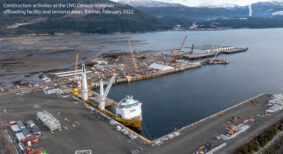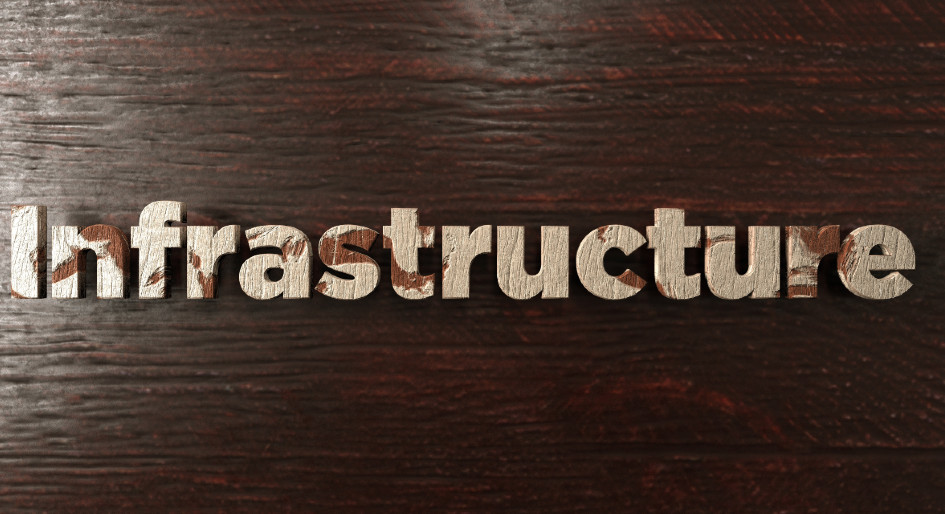Prospective project proponents in the United States are looking to Canadian models for facilitating public-private partnerships (P3s) as they contemplate the infrastructure investment that two recently enacted spending bills are designed to trigger. Speaking during the Bloomberg online Canadian finance conference earlier this fall, Mac Bell, director of infrastructure investments with Fengate Asset Management, identified Infrastructure BC and Infrastructure Ontario as frameworks that could help U.S. state and local governments take advantage of the vast new pots of funding.
“In Canada, these agencies work on behalf of governments everywhere to procure infrastructure. They have the documents. They have the process. They have the expertise to manage execution of the project and the procurement to pick a private sector partner through the P3 model,” he said. “The U.S., I think, is still at a very early stage. It would be very helpful if there was a SWAT team of experts, perhaps domiciled in a federal agency or a state agency somewhere, where states, counties and cities have access to expertise and best practices around procurements.”
An onslaught of transportation, telecommunications, energy, utility, facilities and decarbonization projects are foreseen in the months and years ahead as state and local governments and a range of broader public sector and community-based players tap into capital grants and tax incentives conveyed through the U.S. Infrastructure Investment and Jobs Act and the Inflation Reduction Act. Bell and fellow panellist Anthony Phillips, co-head of public-private partnerships and projects with the P3 investor and manager, John Laing Group, predict that P3s will be central to the rollout of many of those projects.
For public partners, P3s are a means to transfer capital and ongoing operational risk. For the private sector, infrastructure’s recession-proof profile dovetails with expectations for a prolonged building spree.
Clean energy, grid capacity to enable the electrification of transportation and space heating/cooling, and broadband for real-time smart controls of almost every element of the transmission and distribution system are chief among the required components to achieve the ambitious targets for curbing greenhouse gas (GHG) emissions that both the Canadian and U.S. governments have embraced. As well, massive amounts of investment is needed in facilities and civil engineering to rein in carbon footprints and improve climate change resilience.
“The asset class is highly attractive both to industrial and financial investors given its core characteristics — given the sector tower winds, the strong ESG profile and attractive investment characteristics,” Phillips submitted.
“Infrastructure is a good long-term investment for those contemplating the class and this is why: public policy; fiscal policy; and a secular growth story,” Dave Wahl, a director and portfolio specialist with ClearBridge Investments, reiterated during a recent webinar sponsored by the NEO Exchange.
EV charging on wish lists in Canada and the United States
In the U.S., Bell and Phillips cite opportunities in education facilities and campus energy systems, transportation hubs including airports, rural broadband and electric vehicle (EV) charging infrastructure. In the near term, the majority of states now have federally approved EV deployment plans, giving them access to a share of the USD $5 billion allocation for 2022-23 earmarked for charging networks.
“We’ve started to see that money rolling out to support that infrastructure,” Phillips reported. “There needs to be a robust charging network and this is where we think P3 can play a role supported by the federal funding.”
EV charging is also on the Canada Infrastructure Bank’s (CIB) wish list for joint investments with private sector partners. The 2022 federal budget affirmed that $500 million of “existing resources” in the CIB’s green infrastructure envelope would be dedicated to “large-scale urban and commercial zero-emission vehicle charging and refuelling infrastructure”, while the government commits an additional $400 million over five years (2022-23 to 2026-27) to its zero-emissions vehicle infrastructure program (ZEVIP) to subsidize installations in less densely populated areas of the country.
Speaking during the Bloomberg online finance conference, CIB chief executive officer, Ehren Cory, summarized the bank’s five priorities — clean energy; green infrastructure; transit systems; trade and transportation; and broadband — and mandate to leverage CAD $35 billion to stimulate further investment. He characterized the fund as a lubricant.
“What we are really trying to find is those good projects that deliver public value that are stuck. They might be stuck because they are too risky or uncertain or have really long paybacks,” Cory noted. “Those are the sorts of things that government money can help solve — patient capital, long-term capital, risk-taking capital — to pair with that private sector money in those five sectors.”
Thus far, the CIB has invested in nearly 40 projects, of which about 20 are now under construction. That includes a number of deals for commercial building retrofits and municipal transit fleets, which Cory called “almost the base load” of agreements to date, but low-carbon fuel and EV charging projects are expected to come on soon. The latter could epitomize the stuck project, presenting a scenario in which prospective investors look for assurance of demand for chargers, while prospective EV purchasers hesitate to buy before they have assurance of an easily accessible charging network.
“To me, this is like a perfect use case for the CIB,” Cory maintained. “There’s a real chicken-egg problem in that investment case, but in the long run, there’s a great business.”
Inflation and rising interest rates complicate business case
Inflation and rising interest rates have also emerged to complicate investment in ways not felt when the CIB was launched in 2018. “The role of the CIB gets even bigger in periods like we’re in right now of high market uncertainty and risk because that’s what we can help manage. We can help insulate to some extent, or share in that risk,” he asserted.
“Investment in infrastructure is really important in times like these,” Cory added “It is one of the few truly cycle-proof kinds of asset classes. Infrastructure helps bring us through economic downturn and recessionary periods because it grows our competitiveness. It grows our economy.”
From a P3 perspective, Phillips commended the trend to inflation riders in Canadian contracts so private and public partners share the impact of rising material and equipment costs, and argued the practice would also serve U.S. proponents well.
“The alternative is that our contractors will just choose to focus on other projects and away from what they consider to be a position that’s just got too much risk for them,” he said. “It goes to market appetite and the mechanisms that clients can provide to ensure that they have the world’s best turning up to their projects.”
“There are mechanisms that have been developed elsewhere to allow contractors to address that risk and it’s for the benefit of the public sector also because it allows for more competitive pricing from contractors to deliver these projects,” Bell concurred.
Barbara Carss is editor-in-chief of Canadian Property Management.










